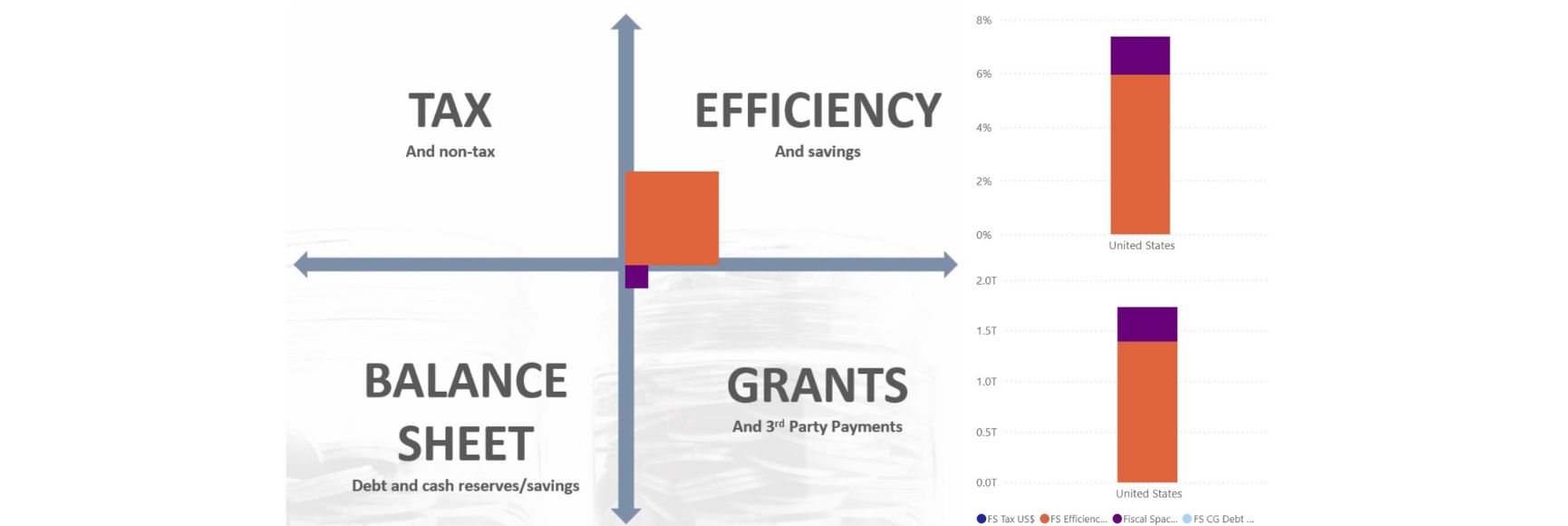Posted by Guilhem Blondy and Xavier Rame
The directives establishing the harmonized fiscal framework in the West African Economic and Monetary Union (WAEMU) in 2009 state that “the government shall keep budgetary accounts and financial accounts” and that implementation of the latter must be completed by January 1, 2019 at the latest.[1]
To attain that objective, this post proposes a sequenced strategy aimed at gradually, over the course of seven years (2012-2018), improving the financial information generated by financial accounting.
To understand the necessity of choosing a gradual approach, it will be helpful to recall the three basic innovations associated with the introduction of financial accounting:
- It is accrual basis accounting. A flow is taken into account not only at the time of receipt (revenue) or payment (expenditure) in the cash flow statement, but also in the income statement when the underlying economic event increases wealth (income) or reduces it (expense). Thus, for the acquisition of consumables, the event generating the expense is the receipt of the order by the competent department, which corresponds to the validation phase of the expenditure. The bases for recording government operations used in most member countries are currently the acceptance of payment and collection orders by government accountants on the one hand, and payment or receipt on the other (“modified” cash basis accounting, as opposed to “pure” cash basis accounting, which only records receipts and payments). In the new system, double entries must be made in the validation stage either by the government accountant based on single-entry subsidiary accounts kept by the payment authorization officer, or directly by the latter under the ex post supervision of the accountant. Moreover, the new Government Chart of Accounts (GCA) directive states that expenses and income are to be recorded directly in class 6 (expenses) or class 7 (income) instead of in class 9 (fiscal cost accounting), which it eliminates.
- It is balance sheet accounting. It gives an account not only of the flows since the start of the fiscal year (income and expenditure, cash flow), but also of the status of the claims (assets) and obligations (liabilities) in each statement of account, presented in a balance sheet, and of the contingent commitments that such claims or obligations may create in the future (off-balance sheet commitments, received or given). The balance sheet items currently shown in the general balance of government accounts are still limited. Often, and at best, it only includes cash, some financial debts, and third-party accounts (current asset claims and nonfinancial debts). An opening balance sheet must therefore be prepared by identifying and valuing other assets (intangible, tangible, and financial fixed assets, stocks, cash), and liabilities (risk provisions), as well as a list of outstanding off-balance sheet commitments. The incorporation of an asset or a liability in the balance sheet then makes it possible to post entries reflecting changes in its value during the fiscal year, such as depreciation charges or provisions.[2]
- It generates the financial statements that are submitted to the Audit Office for an opinion. The financial statements referred to in the GCA directive are the four accounting statements provided for by SYSCOA:[3] the balance sheet, the income statement, the cash flow statement, and the attached statement (which “contains all information useful for understanding and using the government’s financial statements…particularly the explanation and quantification of off-balance sheet commitments), plus a statistical statement and the government financial operations table (TOFE). The Audit Office is required to issue an opinion on the quality of the annual accounts, including, according to Article 80 of the GCA directive, the financial statements, the balance sheet (also based on the financial accounting), and information on general budget operations, specific budgets, and Treasury special accounts (produced on the basis of the budgetary accounting). Prepared in accordance with international audit standards, it should be similar, in terms of its presentation and method of preparation, to an audit of the government accounts.[4]
In this context, 4 phases of gradual improvement of financial information can be envisaged:
- Phase 1: improvement of the quality of modified cash basis accounting and the development of supplementary information on financial assets, current assets, and financial and nonfinancial debts (by January 1, 2013).
- Phase 2: accrual basis recording of income and expenses; incorporation of tangible assets and stocks; submission of the financial statements—on an experimental basis and without publication—to the Audit Office (by January 1, 2015).
- Phase 3: incorporation of intangible assets; survey of risk provisions and off-balance sheet commitments; publication of the government’s annual financial statements together with the Audit Office opinion (by January 1, 2017).
- Phase 4: use of depreciation charges and provisions; introduction of analytical cost accounting; consolidation of the annual accounts of the government and public administrative institutions (EPAs) (by January 1, 2019).
Improvement of the bases of the current accounting system is the priority until 2013. In practice, improving the quality of accounting entries and the reliability of general balances should be considered a prerequisite for moving toward accrual basis financial accounting.
The preparation of an opening balance sheet should be undertaken without delay, but should continue over a long period.
- The incorporation of financial assets and liabilities, generally already tracked by the MEF (partly on a non-accounting basis), can be accomplished first.
- The survey of tangible assets and stocks could also be based on the items already identified by land offices and materials accountants, but should closely involve the ministries concerned and will take more time. The valuation of land and buildings, in particular, entails organizational changes (establishment of a true government property policy conducted by land offices) and investments (computerization of the government property register). Finally, each ministry should inventory intangible fixed assets, risk provisions, and off-balance sheet commitments within its area of competence.
The accrual basis recording of income and expenses can be introduced at different stages of the reform, depending on the progress of work on the information systems and the reforms of the revenue and expenditure procedures. The entry into force of the new chart of accounts necessitates a change in the financial information systems, which can be undertaken upon adoption of the new GCA decree. On the other hand, the recording of expenses upon validation requires the participation of the sectoral ministries in the posting of accounting entries, which is feasible only if those ministries have first strengthened their finance function.
The submission of financial statements to the Audit Office on an experimental basis during the transition period should be considered a good practice. Such a “pre-audit” or “trial audit” approach—before the Audit Office begins officially attaching to the draft budget review law the opinion on the accounts required by Article 51 of the Budget Law directive—has been adopted, for example, in the United Kingdom. This makes it possible to engage in an upstream dialogue with the external auditor and to take a collaborative approach to gradually improving the financial statements, while avoiding a public debate on the quality of the accounts at too early a stage of the reform.
Monitoring the value of assets in the accounting through depreciation charges and provisions can be postponed to the end of the transition period envisaged by the WAEMU. The use of depreciation charges and provisions makes it possible to give full meaning to the reform by introducing analytical cost accounting. Calculating them, however, is often complex and can be a major factor in the extension of closing deadlines. Consequently, some countries, such as Canada and Spain, chose several years ago to record expenses on an accrual basis but to fully depreciate fixed assets at the time of acquisition, before switching to full accrual basis accounting.
Consolidation of the accounts of the government and of public administrative institutions (EPA) is also a long-term objective. Article 1 of the GCA directive states that “government financial accounting applies to the central government and its public administrative institutions.” Book I of the instructional guide prepared by the WAEMU Commission proposes presenting the consolidated financial statements of the government and its public administrative institutions along with the government’s annual financial statements. With the exception of the consolidated TOFE (to be completed in 2017 for the 2016 accounts, according to the TOFE directive), the production of these consolidated financial statements can be pushed back to 2019. In the meantime, aggregated information on the annual accounts of these institutions would be provided in the attached statement.
The cost and the complexity of introducing financial accounting should not be overlooked. The sequencing of the various phases involved in its introduction should allow for the gradual improvement of financial information useful for decision-making by managers, taking into account the need for capacity-building both within the finance ministry and in the sectoral ministries. Let’s give time a little time…
[1] Article 86 of the directive on budget laws within the WAEMU states that “the member countries shall have until January 1, 2017 to comply fully with the provisions on […] rules and procedures relative to the accrual principle governing financial accounting, as provided for in Article 72 of this Directive. In the latter case, member countries wishing to do so may have an additional period of (2) years.”
[2] According to the GCA directive (Article 30), depreciation is the “reduction in value of fixed assets that inevitably and irreversibly lose value.” “When the decrease in the value of an asset is only probable because of events considered to have reversible effects, a provision for depreciation is established.”
[3] On December 20, 1996, the WAEMU Council of Ministers adopted a regulation defining a common accounting framework for the member countries. This framework, known as the West African Accounting System (SYSCOA), entered into force on January 1, 1998.
[4] Article 51 of the BL [budget law] Directive states that “the Audit Office shall express an opinion on the internal control system and the management control mechanism, on the quality of the accounting procedures and the accounts.” Our conclusion is that the formulation of this opinion should be based on financial audit standards and will, therefore, be similar to an audit of the government accounts.
Note: The posts on the IMF PFM Blog should not be reported as representing the views of the IMF. The views expressed are those of the authors and do not necessarily represent those of the IMF or IMF policy.





